In 1683 thirteen families settled in what was to become Germantown, Pennsylvania. Fleeing persecution, they responded to William Penn’s promise of religious freedom and created a town of diversity, eventually drawing “French Huguenots, English Quakers, Swedes, Moravians, Blacks and Lutherans; millers, weavers, shoemakers, cabinetmakers, shopkeepers, farmers, young, old, rich and poor.”
This was not an agrarian community like much of early America. Land lots were laid out fronting on what would become Germantown Avenue with deep yards allowing for the gardens, orchards, stables, and other outbuildings needed for a seventeenth century household, but they were not farms. Generations later in West Central Germantown these deep yards would become city blocks with Victorian homes but during the Revolutionary War the English and colonist soldiers had to chase each other hopping fences between properties in the Battle of Germantown.
One such land lot was lot 17 at the corner of what is now Germantown Ave and West Walnut Lane. We know that it was purchased about 1689 by Hans Milan, a Quaker from Crefeld, Germany who probably built a log house on the site. This property stayed in the same family, each generation making their own improvements until 1973 when it was turned into the historic house museum, Wyck. Few buildings from this time still exist in this neighborhood.
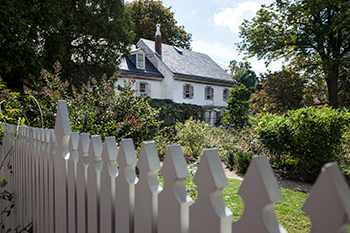
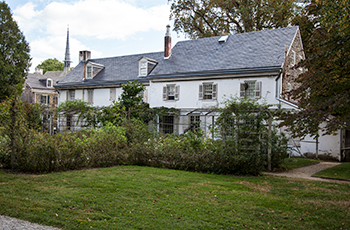
Originally built in 1736, Wyck is the oldest house in our neighborhood.
Germantown grew in population during the 1700’s, as did the nation. During the 1790’s a series of yellow fever epidemics brought any who could escape Philadelphia to Germantown with its higher elevation and cooler, fresher summers. President Washington along with federal and state governments moved here during 1793. Many homes along Germantown Ave were built during this Federal Period.
The history of the development of Tulpehocken Street and surroundings as a “garden suburb” was beautifully explored in a 2014 slide lecture given by historian Mark Frazier Lloyd. An unedited recording of the talk, which he called “Enterprise Unleashed: Tulpehocken Street 1808-1852,” can be found here.
West Central Germantown is centered around the original land lots of the Johnson Family which became Tulpehocken St and that of Wyck, which became West Walnut Lane in the late 1840’s.
But it was technology that made major changes to our neighborhood. In 1832 the first train line was built between Germantown and Philadelphia, allowing men from the then upwardly mobile middle class, who speculated in real estate, like Ebenezer Maxwell, to work in the “city” while living in what was to become one of America’s first suburbs.
Many of the homes in West Central Germantown are Gothic revival, a style popular from the 1830’s to the 1860’s. After the Civil War styles became high Victorian Gothic, “characterized by an asymmetrical plan and massive monochromatic detailing, steeply pitched roofs, polygonal chimneypots, hood moldings or labels over windows, with curvilinear gingerbread trim along eaves and gable ends.
The larger castle-style structures are often dominated by a battlemented center tower, side verandas, varied window types and shapes with tracery and stained glass….”
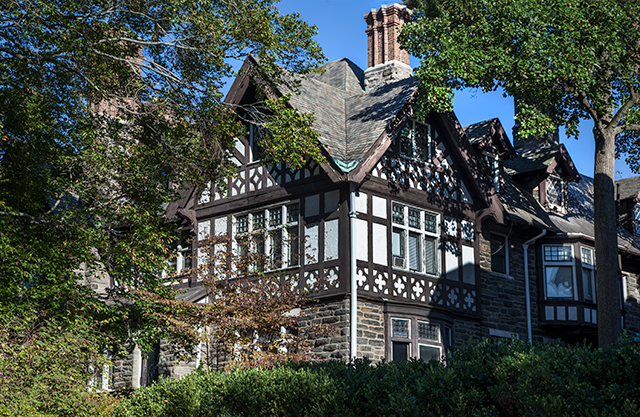
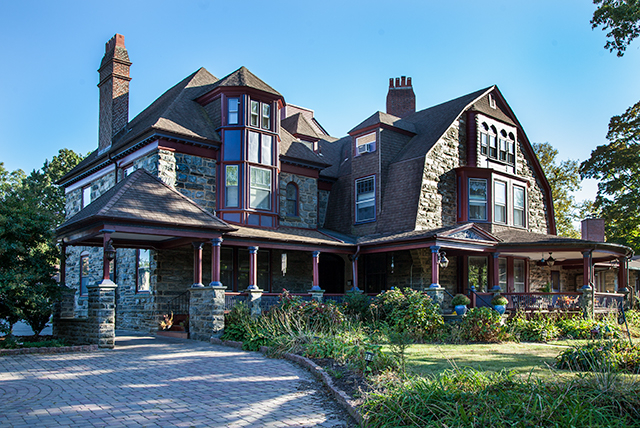
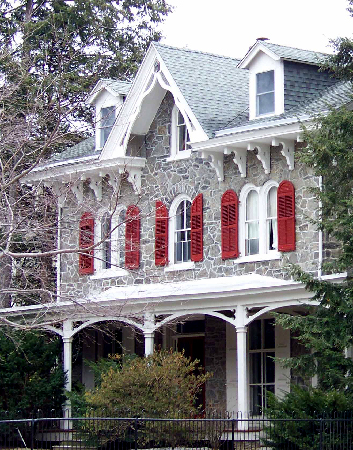

Homes in the Tulpehocken Station Historic District
In the 1880’s the greater expansion of railroads and the advent of the automobile led to the rise of apartment buildings. Many factories moved from the city to Germantown, and many of Germantown’s original suburbanites moved further out.
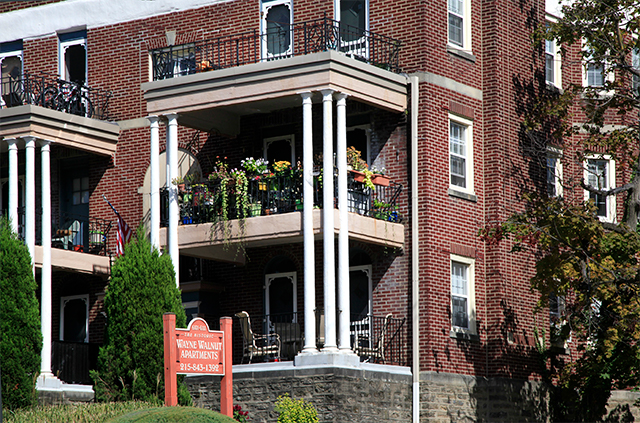

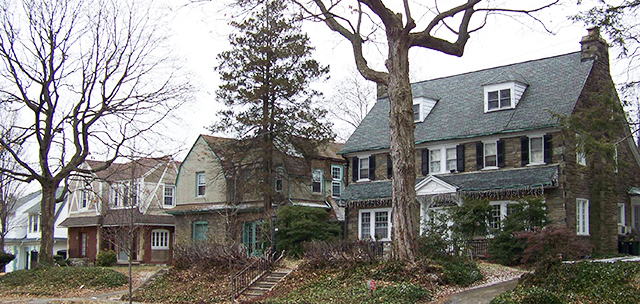
After WWII there was a burst of expansion, but as the suburbs moved west and people with them, business followed, and so did federal monies. Germantown faced the same issues as many eastern cities.
Neighbors concerned with the urbanization of our area began to form associations starting in the early 1900’s. West Central Germantown Neighbors had its roots in the 1950’s with the fight to save the Ebenezer Maxwell home from being torn down and replaced with a gas station. This building is now the Victorian House Museum, Ebenezer Maxwell Mansion.
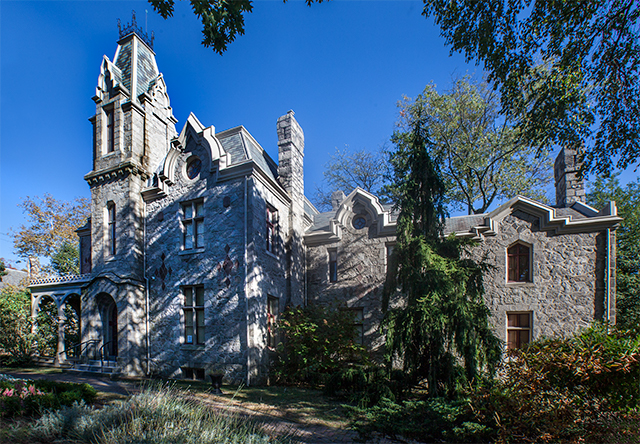
In 1984-85, neighbors worked to document homes within the Tulpehocken Station Historic District in order for it to be placed on the National Register of Historic Places, thereby preserving the architectural history of this area.
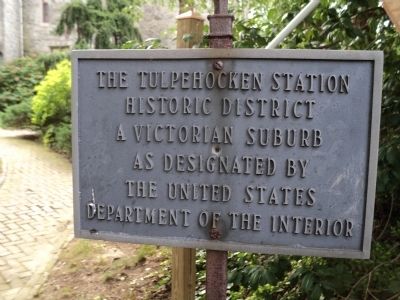
Thirty-seven houses are considered “significant” and 118 are considered to be “contributing” to the district. The Tulpehocken Station Historic District covers an area bounded by Germantown Ave. on the north, Pennsylvania Railroad tracks on the south, Tulpehocken Street on the west and Walnut Lane on the east. The nomination document can be found here.
Read more about the history of West Central Germantown Neighbors on our WCGN page.
At the heart of the Tulpehocken Station Historic District is the train station itself, which fell into disrepair from about 1970 on. Read more about our fight to save and restore the station on our TULPEHOCKEN STATION page.
Today many of these original homes remain, some larger ones converted into twins or apartments, many remaining single family dwellings. Set back on tree lined streets, many yards fronted by wrought iron fences or stone walls, they are home to a diverse population that enjoys the feeling of a different era while still living within a vibrant 21st century city.

References:
Dr Naaman H Keyser, C. Henry Kain, John Palmer Garber, Horace F. McCann, History of Old Germantown, Horace F. McCann Publisher, Germantown, Philadelphia, PA, 1907
Sandra MacKenzie Lloyd, Germantown and its Founders, The Wyck Association, The Germantown Historical Society, and the Ebenezer Maxwell Mansion, 1983.
Mark Frazier Lloyd and Sandra Mackenzie Lloyd, Three Hundred Years of Germantown History, Germantown Crier, Vol 35, #1, Winter 1983-83,
Louise Strawbridge , The “Stylish Villa” of Victorian Germantown: West Tulpehocken Street and West Walnut Lane, Germantown Crier, Vol 34, #1,(1982),
National Register of Historic Places Inventory — Nomination Form for Tulpenhocken Station District. See full copy of form with house by house description.